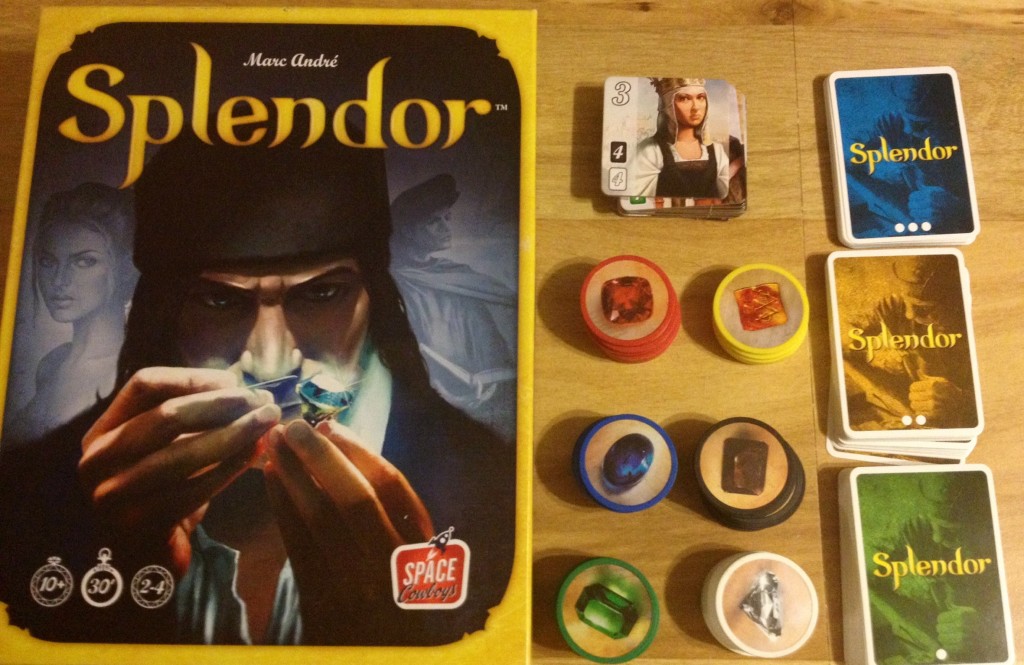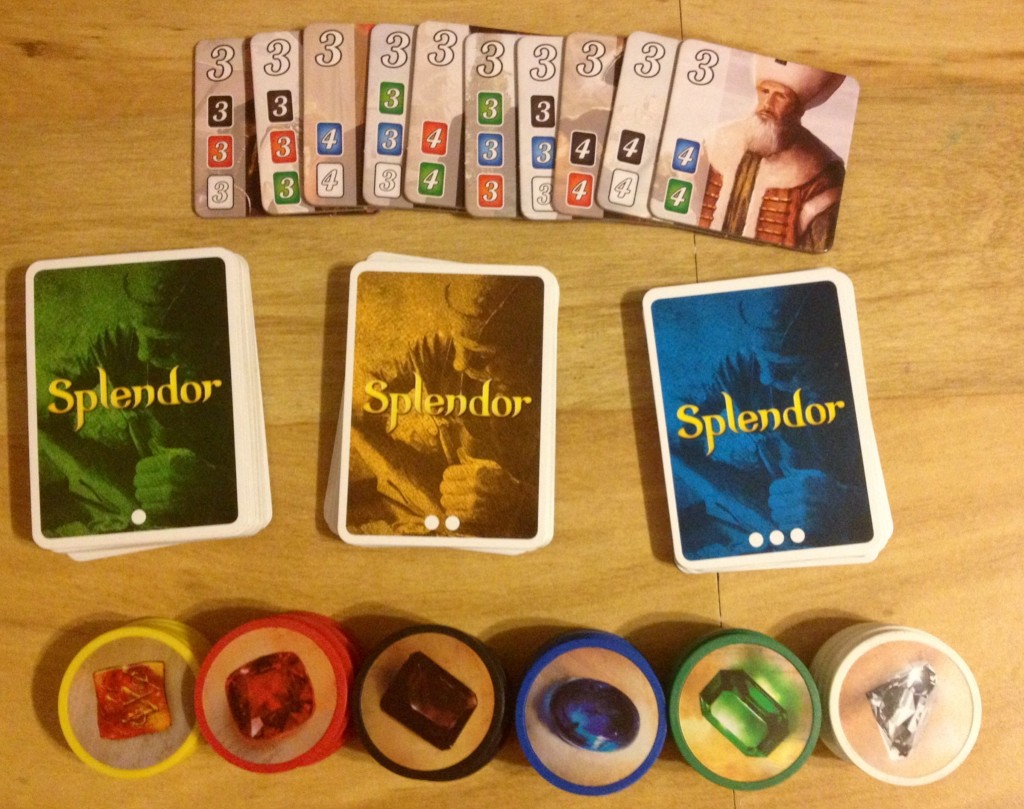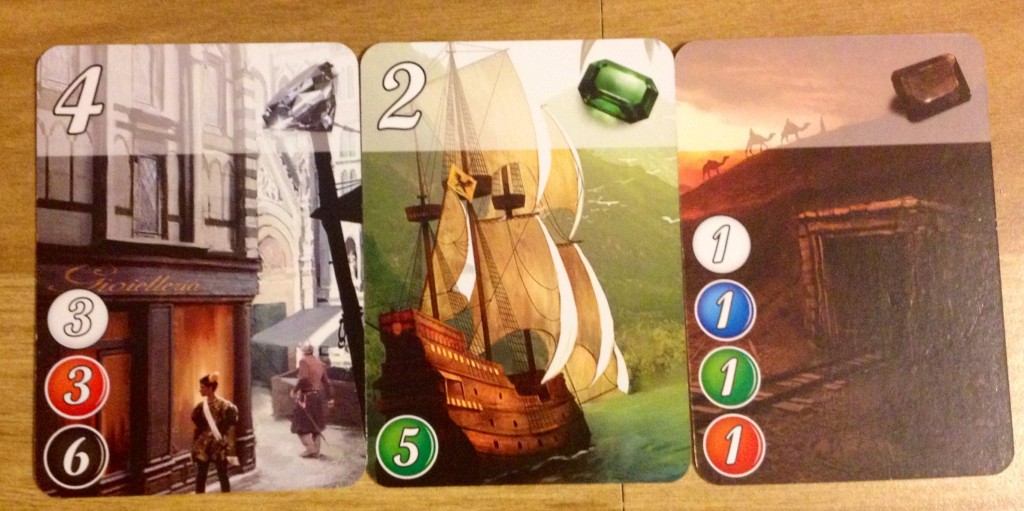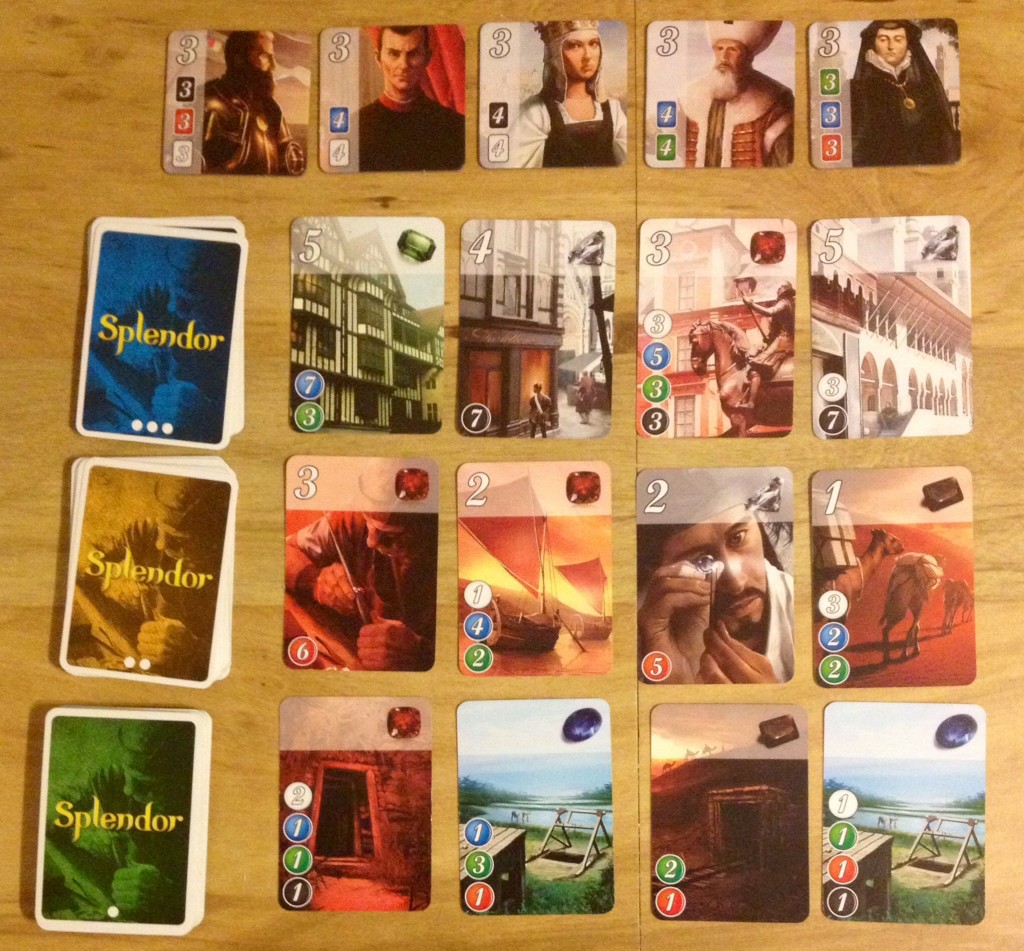Hey! It’s almost time for the Spiel des Jahres!
You know, Spiel des Jahres? The Oscars of board games? Except that it’s international, so maybe it’s actually the Golden Globes of board games? Erm, hold on…
Okay, that attempted contextualizaion fell apart rather quickly. Let’s just go with the fact that it’s a big deal to be nominated or even recommended for a Spiel des Jahres (German for “Game of the Year”), not to mention actually winning one. If you’re a game designer or publisher, you will wear that little awards logo like a badge for the rest of your life. Literally. Whoever wins the award this July 14th will stick it onto their box design FOREVER.
Which brings me to today’s game spotlight. It’s been a while since we’ve talked about tabletop games here on the Recorder, and more’s the pity. With Walsh and Karen on staff, perhaps we can try to be a Great Lakes version of Shut Up & Sit Down review. Ah, dreams. In the meantime, however, I’m going to take a look at one of this year’s Spiel des Jahres nominees, Splendor.
The Basics
The theme of Splendor is simple: each of the 2-4 players is a gemstone merchant in Renaissance Europe. Everyone is jostling to be the most prestigious of gem dealers, and you increase your prestige by building developments and gaining patrons (each of which is worth a certain amount of points in the game). Once a player reaches 15 prestige points, that triggers the final turns, and whomever has the most points wins.
A turn in Splendor consists of executing one of three possible actions:
- Pick up a selection of gems. There are five different varieties (colors) of gem, which function as the game’s currency.
- Reserve a development card. Pick up one of the 12 face-up development cards from the tableau, and hold it in your hand for later purchase. If you do, you also get a gold chip, which counts as a gem of any color.
- Purchase a development card. Pick one of the cards from the tableau — or from a reserved card in your hand — and pay the cost in gems. Put it face-up in front of you, gaining any points and/or gem bonus on the card.
That’s it. A player does one of these three actions, and then the next player goes. It’s a simple game that is maddeningly deep in strategy, and beautiful in theme and design. It’s a half-hour rollercoaster of emotion and brain-stretching gameplay, so let’s take a gander at what’s in the box:
The Components
There are three sets of components. At the bottom of the image are the gems, your means of buying developments. They’re basically casino chips, but with paintings of gems on them instead of a currency value. It may just be me, but it’s nice to have the heft of these chips in your hand, fidgeting with them as you try to piece together the best plan of action (which your opponents will no doubt mess up). Despite your desire to have tall stacks in front of you like a poker pro, you cannot possess more than ten gems at any point. Sorry, thems the rules.
Above the gems are the development cards. As we’ll see below, these will be laid out in a tableau, three rows of four cards. The bottom row draws from the green deck of simple (cheap, worth few points) developments; as the rows go up, the developments cost more gems and are worth more points. The development cards serve two main purposes, so let’s take a closer look at them.
Aside from the beautiful art design, you’ll notice each card has three elements:
Prestige Points (upper-left corner). This is how many points you gain once you purchase the card. You’ll notice that some cards are missing a number, which means they are worth no points. But you’ll need them because they’re cheap and provide a…
Gem Bonus (upper-right corner). Besides points, development cards provide a gem bonus, which functions as a discount when buying other development cards. For example, if you have two development cards that each give you ruby bonus, all other cards cost you -2 rubies.
Cost (lower-left corner). This shows how many gems — and of which type — you’ll need to spend (or have as a discount) to purchase this development card. As you might notice, some of the big-points cards are EXPENSIVE. You’ll need a lot of obsidian (black) discounts to even consider buying that one on the left.
The last component is the wealthy patron class of Renaissance Europe, represented by these square tokens:
Patrons look similar to development cards, but work function differently — they’re all about points. Instead of a cost, they have a requirement. Take a gander at that Machiavelli-looking patron on the left: he’s looking for a merchant who has four sapphire (blue) development cards and four diamond (white) development cards. After you take an action on your turn, if you meet the requirements of any of the available patrons, you get to take one. You gain the patron’s points, and nobody else can claim that patron for the rest of the game.
The Strategy
The goal, then, is to accumulate cheap development cards, which let you buy expensive cards (and their points), and help you attract patrons (and their points). Because cards are constantly bought and replaced by different ones, and because you’re competing against other players for resources, you have to adapt your gameplay as the game goes. It’s so simple, but ridiculously tense and exciting.
Look at this tableau from a 4-player game:
There are a lot of development cards calling for emeralds, but the only emerald (green) development is one of those top-tier cards. That’ll change, but for now you’ll want to make sure you’ve got some green gems. The patrons primarily want diamond and/or sapphire developments, but it’s actually an even spread, so you’re not locked out if you don’t focus on them. But look at the top-tier development cards — you’ll need some serious sapphire and/or obsidian (black) discounts to purchase them. Meanwhile, rubies (red) are all the rage in the bottom & middle tier, but none of the big developments require them. Plan accordingly.
And remember: your opponents are looking at this same puzzle, and the puzzle constantly shifts. Other players may not try to solve it in the same manner, but their plans will get in your way. Therein lies the tense enjoyment of the game.
A game of Splendor has a pace like a roller coaster. The early game is like that long climb up the first hill: players will be picking up gems, reserving a card or two, and slowly accumulating low-tier development cards. The midgame occurs as players start to purchase mid-tier cards, and the first patrons start to come off the board. Congratulations, you’ve reached the crest of the first hill — from here on out, hold on and try to follow all the twists and dips and turns.
The pace of Splendor really changes when you hit this stage. Sure, you can keep grabbing low-tier cards, usually without having to pay for them. But that’s when opportunity cost comes into play: while you picked that free low-tier card, you gave your opponent the chance to purchase or reserve that mid- or top-tier card that you REALLY needed. AND OH MY GOD, YOU CAN’T AFFORD ANY OF THE TOP-TIER CARDS NOW AND SUDDENLY EVERYONE’S ABOUT TO HIT 15 POINTS AND HOW DID IT GET TO THIS POINT AND YOU START FLAILING IN FRENETIC PANIC.
So you adapt your strategy, and everybody is tense because everyone’s getting close to the endgame trigger…. Then someone hits 15 prestige points, and the roller coaster slows down, finishing the current round of turns. You count points, and someone wins. Your heartbeat returns to normal, and you realize you want to get back in line for another go of Splendor. The game plays in less than a half-hour, so you have plenty of time for another round.
If you’re like me, you’ll reset the game, and start climbing back up that first hill for another ride. And another. And…
End Credits
Splendor
BGG Profile
designed by Marc André, art by Pascal Quidault
published by Space Cowboys
Players: 2-4
Playing Time: 30 minutes








